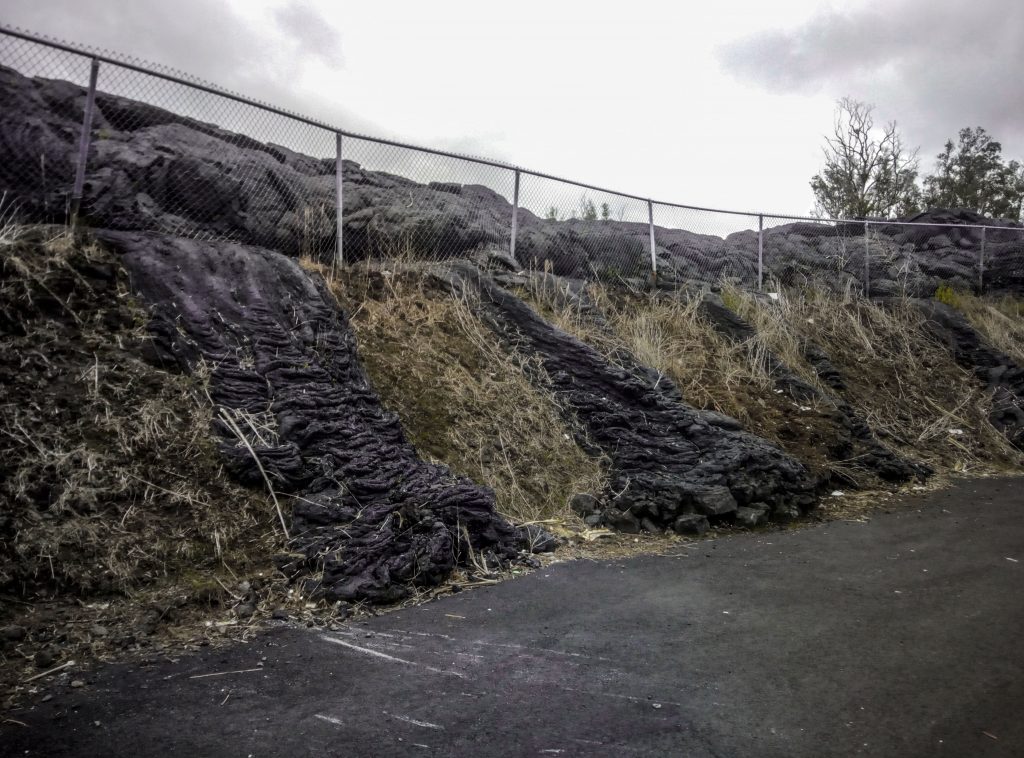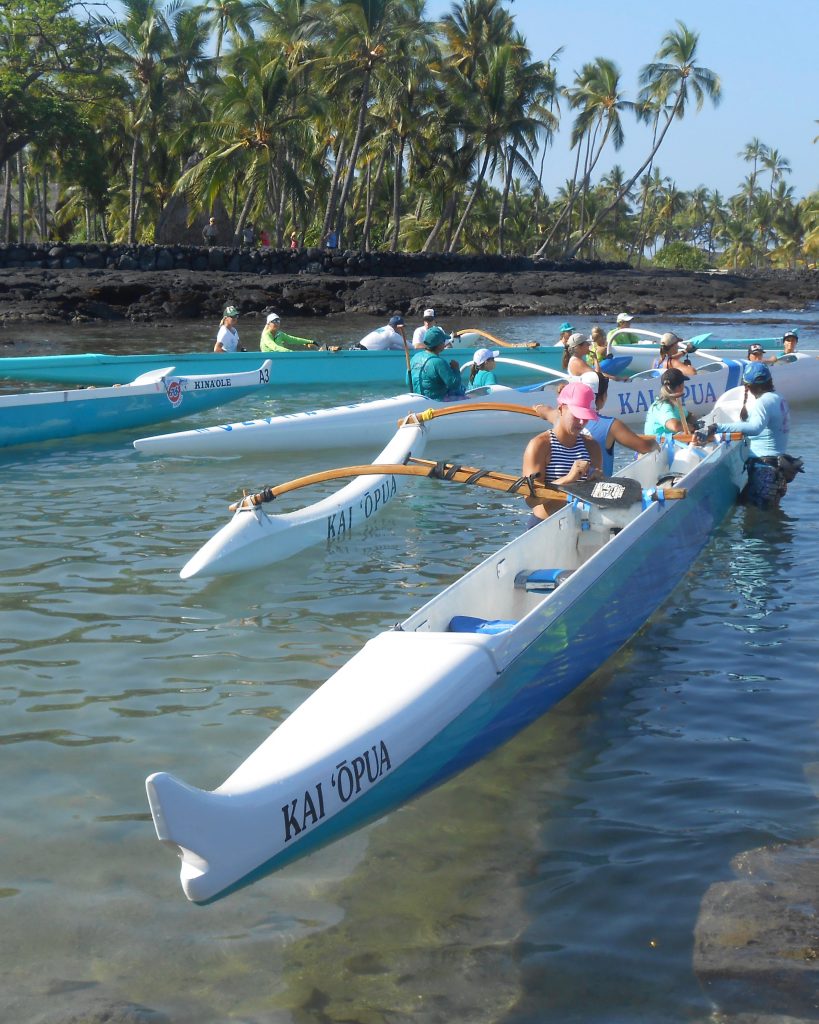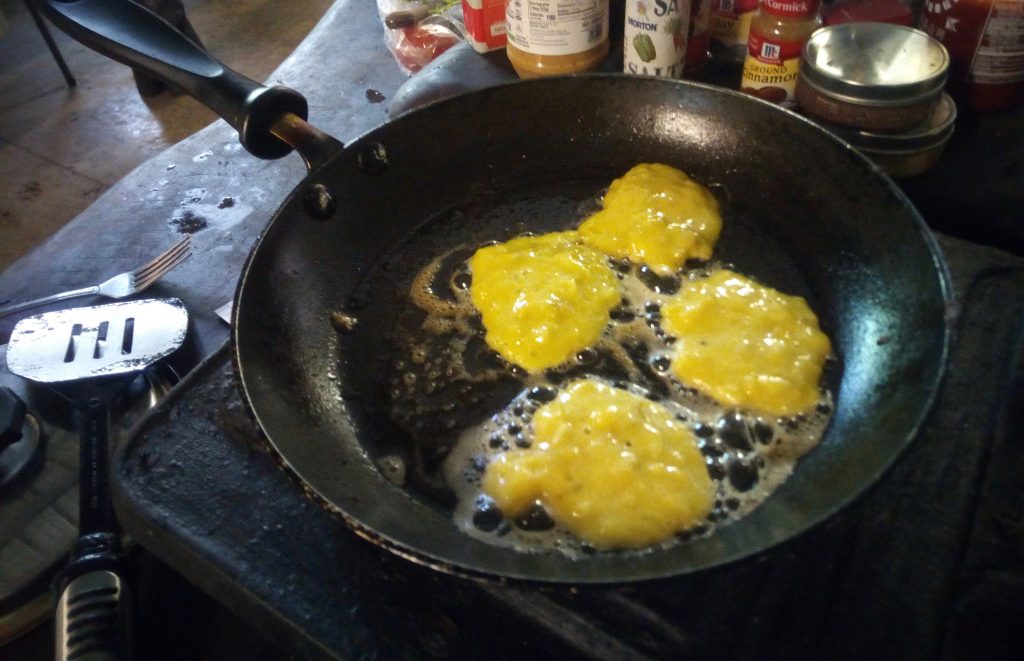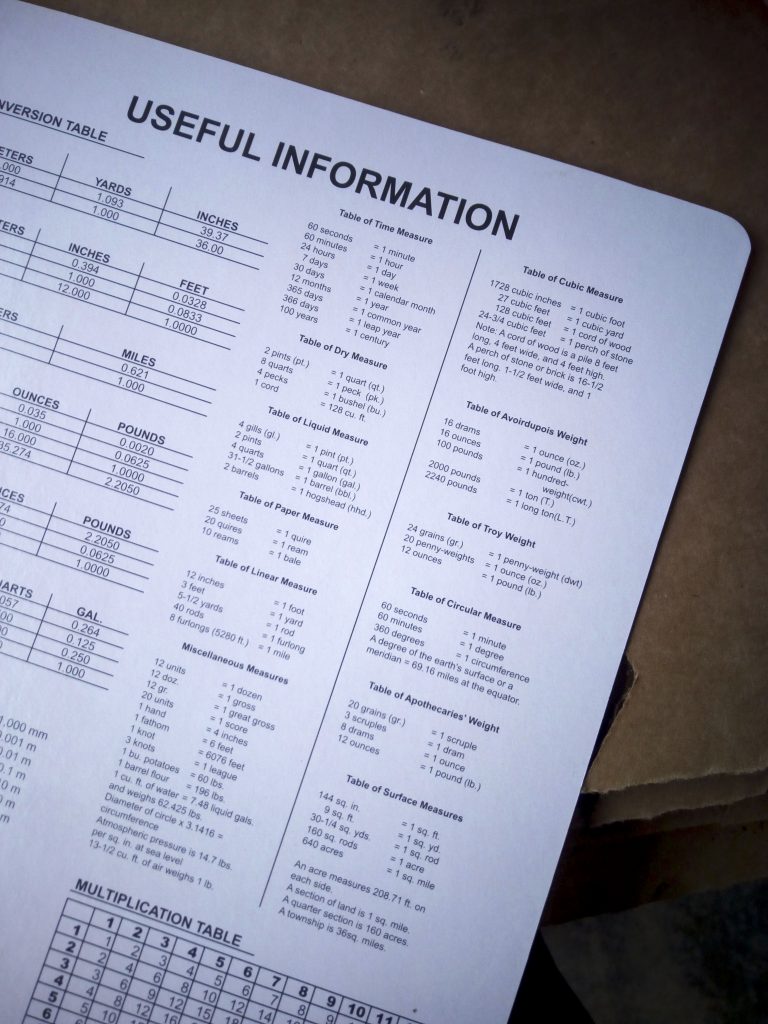… in 2014, just before Pahoa at the local dump (or transfer station as it’s officially called). This is a reminder that outbreaks in that area are frequent and temporary. The Kilauea has been continuously erupting since 1983.
I’ll take this as an opportunity for me to let everyone know, I’m safe. Only a small part of Big Island is critically affected. At the moment it’s mostly the area around Leilani Estate.
Living on Big Island means, living on top of a massive shield volcano – taller than Mount Everest from the sea floor up. Generally speaking, areas in the southeast are younger and more active than in the northwest. This is because the tectonic plate Hawaii is situated on, slides slowly in northwesterly direction over a volcanic hotspot, producing a chain of islands on the go. As the trade winds blow from the northeast, it’s mostly the regions southwest of the Kilauea that battle volcanic smog and occasionally ash.
It’s also an opportunity to explain, why there are no pictures of active fissures and lava flows on my blog. Apart from the fact that it’s dangerous and illegal to go there, I respect the privacy of people who have lost everything or are still battling for their livelihood.
However, for anyone that’s interested, there are still residents that resisted a mandatory evacuation and post regular updates on on Facebook and Youtube. This is about as close as I will ever get to the fissures, too.



